Do gas ranges require venting?
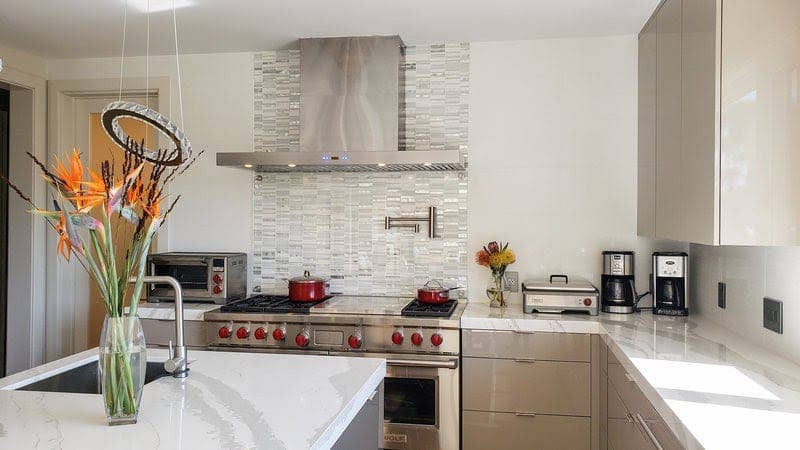
Most gas ranges in the United States do not require venting to the outside. Check your owner’s manual for specific venting recommendations or requirements. We recommend venting any gas range to the outside of your home. A professional-grade range hood will evacuate harmful cooking fumes, reduce cooking odors, and improve your health and safety.
Table of Contents
Improve Health and Safety
Gas stoves must be properly vented for your health and safety since they produce harmful PM 2.5 particles. These tiny particles can travel deep into the respiratory tract and lungs. They are especially harmful to people with asthma or other similar pre-existing conditions. Common symptoms include coughing, sneezing, irritation of the eyes, nose, or throat.
Gas stoves also produce nitrogen oxide, nitrogen dioxide, formaldehyde, and carbon monoxide. Heavy exposure to these pollutants can be deadly. Carbon monoxide is particularly dangerous because it is both invisible and odorless. Five to about 15 ppm of carbon monoxide is an acceptable range of CO levels for a ventilated gas range. Poorly ventilated stoves may range from 30 to 50 ppm or higher.
Between 15 to 30 ppm, people may experience some short-term symptoms such as headaches, shortness of breath, or nausea. Those with asthma may experience more severe symptoms. Thirty or more and into the 100s of ppm, severe nausea, disorientation, and migraines can occur. Prolonged exposure to high CO levels can even lead to comas or death.
A kitchen exhaust fan will vent the harmful contaminants out of your home so you can enjoy fresh indoor air quality.
Whether you have a gas or electric stove, a range hood is a reliable option to keep your kitchen air clean and fresh. Learn more about whether you need a hood over your electric stove in this article.
Reduce Cooking Odors
In a poorly ventilated home, cooking odors will accumulate quickly. They may linger in your kitchen for several days or even weeks.
A range hood not only removes harmful contaminants like carbon monoxide but it also removes cooking odors from your kitchen.
U.S. Requirements for Gas Range Venting
There’s no national code for gas venting in the United States. Generally, in the U.S., you don’t have to vent a residential gas range to the outside. But, we recommend that you buy a range hood to vent contaminants from your gas range to outside your home. It will dramatically improve your indoor air quality and reduce the risk of long-term respiratory problems.
Most restaurants and other commercial establishments require a range hood for ventilation.
Gas Range Venting Requirements in Colorado
In most cases, your gas range doesn’t require venting in Colorado. The state code only has restrictions for stoves with plastic venting. All plastic vent ducts must pass a 5 PSI air test. The manufacturer’s instructions will also be reviewed by a licensed professional to ensure compliance. For more details, take a look at the code here.
Gas Range Venting Requirements in California
California requires ventilation of 100 CFM or more, or at least 5 air exchanges per hour. This applies to new residential areas, remodeled homes, or additions of 1,000 square feet or more. We recommend buying a range hood to satisfy this requirement.
To learn more about ventilation requirements in the U.S., check out this complete guide.
Is it safe to have a gas stove without a vent?
It is not safe to have a gas stove without a vent. Although they are not required in America, vent hoods are crucial to improving your indoor air quality. Since Americans today spend over 90% of their time indoors, venting out pollutants and cooking exhaust is all the more important. The EPA found that some pollutants are 2 to 5 times more abundant indoors than outdoors.
So, whenever you use your gas range, turn on the range hood. If you’re cooking with high heat or for a long period of time, use the max speed. Otherwise, the low speeds are more than enough.
Why does a gas range not need to be vented?
It’s a common misconception that a gas range does not need to be vented. Opening windows and doors helps, but a range hood will provide the best ventilation.
While it’s true that gas ranges produce a small amount of harmful contaminants, they will build up over time. Carbon monoxide, formaldehyde, and other compounds can sit in your home for days or weeks and build up slowly. In poorly ventilated homes, this build up will occur faster and be more of a health hazard.
Breathing in those compounds can cause symptoms ranging from headaches and nausea to death. So it’s vital to vent your gas range for your health and safety.
Do you need an exhaust fan for a gas stove?
Yes, gas ranges produce a lot of heat and small concentrations of harmful chemicals. An exhaust fan will keep you and your family healthy for years. We recommend at least 600 CFM for a vent hood over a gas stove.
But, sometimes you will need more. To find the minimum CFM for your vent hood over a gas stove, divide the total BTUs by 100. For the most efficient ventilation, purchase a range hood with at least that much CFM.
For example, if your gas range produces 60,000 BTUs, divide that number by 100 to get 600 CFM. So, the minimum CFM for your vent hood is 600 CFM.’
Learn more about calculating CFM at this link.
What are the different types of vent hoods?
To vent your gas range, you have a few different types of hoods to choose from: wall, island, under cabinet, outdoor, and insert range hoods.
To learn more about each type of hood and which one is best for you, check out this article.
Best Range Hoods for Gas Stoves
Hopefully it’s clear that you should buy a range hood over your gas stove. But you might be wondering: which range hood is best? Today, range hoods vary widely in their quality of materials, CFM, and efficiency.
We prepared a complete guide with 10 great options for vent hoods over your gas stove. It’s packed with wall hoods, islands, inserts, and more. Check it out here.
How much CFM do you need to vent a gas range?
Every gas range is different, but calculating how much CFM you need is easy. Just take the total British thermal units and divide them by 100. If you can’t find the BTUs, check the owner’s manual. Most products today have manuals that you can look up online, or you can call in and ask the manufacturer.
Take a look at this video as we walk you through how to calculate the CFM you need for your hood.
For most homeowners, 900 CFM will be enough to vent a 30” or 36” gas range. Larger ranges at 42”, 48”, 54”, or 60” may require 1200 to 2000 CFM.
We’ve written in-depth reviews of several hoods at different CFM ratings. Check them out below.
Best 600 CFM Range Hoods and Buyer’s Guide
Best 900 CFM Range Hoods and Buyer’s Guide
Best 1200 CFM Range Hoods and Buyer’s Guide
Can I use a ductless range hood with my gas range?
We don’t recommend venting your gas stove with a ductless hood. A ductless range hood merely recirculates your kitchen air. The air moves into your hood through charcoal filters and back into the kitchen.
A ductless range hood can’t get rid of a lot of the ultra-fine particles that are harmful to your health. On top of that, it’s typically not as powerful as a ducted hood. So, use a ducted hood to keep your indoor air clean and fresh.
Can I use a downdraft range hood with my gas range?
Yes, but it’s not as efficient as a hood over your range. Downdraft hoods pull the air down before moving it to the outside of your home. They use more power and have to fight the rising cooking fumes to get them to evacuate. In contrast, over the range vent hoods collect all air that rises naturally..
Efficiency is particularly important with hoods over gas ranges. They produce harmful contaminants that need to be evacuated from your home. These chemicals include carbon monoxide and dioxide, among others.
Do I need a makeup air kit in a kitchen with a gas range?
In most cases, you won’t need to use make up air. If your range hood is 1200+ CFM and you run it for hours each day, you might need a makeup air kit. You might need a kit if you have a hood over a gas range in a small kitchen, too. Small kitchens have less air volume, so it doesn’t take much power to require make up air.
Also, some building codes require make-up air for your range hood. Take a look at your state’s codes or contact your landlord to double check.
If you’re in doubt about needing make up air, you can also consult a contractor.
How high do I install my range hood over a gas range?
Install your range hood between 28 and 36” over a gas range. This keeps your hood from getting damaged and improves its efficiency. Over an outdoor grill, mount your hood between 36” and 42” above the cooktop. This compensates for the added heat and smoke produced from your grill.
To learn more about range hood mounting height, check out this complete guide.
Do gas ranges give off carbon monoxide?
Yes, gas ranges give off carbon monoxide, carbon dioxide, and formaldehyde, among other contaminants. In high concentrations, these compounds are dangerous to your health. Every home with a fuel burning appliance like a gas range should have a carbon monoxide detector. If it goes off often, you know that you need to improve your ventilation or use the range less.
How much carbon monoxide does a gas oven produce?
The typical CO levels of a gas range are between five and 50 ppm. If left on for extended periods of time, gas ovens can produce hundreds of ppm of carbon monoxide, well beyond the safe levels in your home. Poor ventilation can cause CO levels to rise higher and more quickly.
The Occupational Health and Safety Administration restricts workers’ CO exposure to 50 ppm over 8 hours. Other companies set exposure limits of 25 ppm and 35 ppm over the same time frame, which you can check out here.
Beyond the above regulations for workers, there is no universal standard for indoor air, according to the EPA. But the limit for outdoor air is 9 ppm over 8 hours and 35 ppm over one hour.
How is carbon monoxide harmful?
Prolonged exposure to at least 50 ppm of CO can deprive your body of oxygen. This can lead to minor symptoms like headaches, dizziness, nausea, and shortness of breath. But in extreme cases, the CO can cause you to lose consciousness, or make it to your heart or lungs, which can be fatal.
Carbon monoxide is most dangerous for people who are sleeping. You could have 8-10 hours of exposure or more without knowing it, which is dangerous for your health.
Does carbon monoxide rise or stay low?
Carbon monoxide rises with the air around it. But that doesn’t mean that it can’t be found in low places. Carbon monoxide is only slightly lighter than air so the weight doesn’t make a huge difference.
Because carbon monoxide rises, the EPA recommends that you install your CO detector about five feet off the ground. Closer to the ceiling works too, but don’t install one within 15 feet of your gas burning appliance.
Can an oven set off a carbon monoxide detector?
Yes. The most common way to set off a carbon monoxide detector is to leave a burner or the oven on. Also, if you burn, spill, or boil over your food, the CO detector may be set off. If the CO detector is close to the oven, that can also set it off at lower levels than usual.
Can you have a microwave over a gas stove?
Yes, you can have a microwave over a gas stove, also called an OTR microwave. But, a better option to improve your ventilation is a range hood. Typically, over the range microwaves max out at about 400 CFM. On the other hand, professional range hoods for your home pull between 600 to 2000 CFM of air.
What happens when the gas stove is left on?
When a gas stove is left on, harmful contaminants accumulate in your home. These include carbon monoxide, carbon dioxide, and formaldehyde, among others. Carbon monoxide is the most dangerous because it is odorless and colorless.
If you left your gas stove on, open all windows and doors immediately to improve ventilation. Turn the burner off right away and avoid using any electrical appliances. A spark could ignite the gas, which is incredibly dangerous.
If the gas smell is quite strong, take everyone out of the house for a while to let it air out. This could prevent CO poisoning or respiratory issues.
If you don’t already have a CO detector, you should invest in one. It will make sure that you keep the carbon monoxide at safe levels in your home. They are especially helpful if you don’t realize that a burner or your oven was left on.
To improve ventilation, avoid using your range to heat your home. Leaving it on for hours can lead to dangerous levels of carbon monoxide emissions.
That wraps up our article ‘Do gas ranges require venting?’ We hope you will take our advice and consider a professional range hood for your home. Check out our current deals at the banner below.
To learn more about ventilation and range hoods, check out the articles below.
Related Articles
How to Improve Indoor Air Quality
Average Range Hood Installation Time and Cost
Range Hood Mounting Height – Complete Guide
Is it safe to have a gas stove without a vent?
It is not safe to have a gas stove without a vent. Although they are not required in America, vent hoods are crucial to improving your indoor air quality. Since Americans today spend over 90% of their time indoors, venting out pollutants and cooking exhaust is all the more important. The EPA found that some pollutants are 2 to 5 times more abundant indoors than outdoors.
So, whenever you use your gas range, turn on the range hood. If you’re cooking with high heat or for a long period of time, use the max speed. Otherwise, the low speeds are more than enough.
Why does a gas range not need to be vented?
It’s a common misconception that a gas range does not need to be vented. Opening windows and doors helps, but a range hood will provide the best ventilation.
While it’s true that gas ranges produce a small amount of harmful contaminants, they will build up over time. Carbon monoxide, formaldehyde, and other compounds can sit in your home for days or weeks and build up slowly. In poorly ventilated homes, this build up will occur faster and be more of a health hazard.
Breathing in those compounds can cause symptoms ranging from headaches and nausea to death. So it’s vital to vent your gas range for your health and safety.
Do you need an exhaust fan for a gas stove?
Yes, gas ranges produce a lot of heat and small concentrations of harmful chemicals. An exhaust fan will keep you and your family healthy for years. We recommend at least 600 CFM for a vent hood over a gas stove.
But, sometimes you will need more. To find the minimum CFM for your vent hood over a gas stove, divide the total BTUs by 100. For the most efficient ventilation, purchase a range hood with at least that much CFM.
For example, if your gas range produces 60,000 BTUs, divide that number by 100 to get 600 CFM. So, the minimum CFM for your vent hood is 600 CFM.’
What are the different types of vent hoods?
To vent your gas range, you have a few different types of hoods to choose from: wall, island, under cabinet, outdoor, and insert range hoods.
To learn more about each type of hood and which one is best for you, check out this article.
How much CFM do you need to vent a gas range?
Every gas range is different, but calculating how much CFM you need is easy. Just take the total British thermal units and divide them by 100. If you can’t find the BTUs, check the owner’s manual. Most products today have manuals that you can look up online, or you can call in and ask the manufacturer.
Can I use a ductless range hood with my gas range?
We don’t recommend venting your gas stove with a ductless hood. A ductless range hood merely recirculates your kitchen air. The air moves into your hood through charcoal filters and back into the kitchen.
A ductless range hood can’t get rid of a lot of the ultra-fine particles that are harmful to your health. On top of that, it’s typically not as powerful as a ducted hood. So, use a ducted hood to keep your indoor air clean and fresh.
Can I use a downdraft range hood with my gas range?
Yes, but it’s not as efficient as a hood over your range. Downdraft hoods pull the air down before moving it to the outside of your home. They use more power and have to fight the rising cooking fumes to get them to evacuate. In contrast, over the range vent hoods collect all air that rises naturally..
Efficiency is particularly important with hoods over gas ranges. They produce harmful contaminants that need to be evacuated from your home. These chemicals include carbon monoxide and dioxide, among others.
Do I need a makeup air kit in a kitchen with a gas range?
In most cases, you won’t need to use make up air. If your range hood is 1200+ CFM and you run it for hours each day, you might need a makeup air kit. You might need a kit if you have a hood over a gas range in a small kitchen, too. Small kitchens have less air volume, so it doesn’t take much power to require make up air.
Also, some building codes require make-up air for your range hood. Take a look at your state’s codes or contact your landlord to double check.
If you’re in doubt about needing make up air, you can also consult a contractor.
How high do I install my range hood over a gas range?
Install your range hood between 28 and 36” over a gas range. This keeps your hood from getting damaged and improves its efficiency. Over an outdoor grill, mount your hood between 36” and 42” above the cooktop. This compensates for the added heat and smoke produced from your grill.
To learn more about range hood mounting height, check out this complete guide.
Do gas ranges give off carbon monoxide?
Yes, gas ranges give off carbon monoxide, carbon dioxide, and formaldehyde, among other contaminants. In high concentrations, these compounds are dangerous to your health. Every home with a fuel burning appliance like a gas range should have a carbon monoxide detector. If it goes off often, you know that you need to improve your ventilation or use the range less.
How much carbon monoxide does a gas oven produce?
The typical CO levels of a gas range are between five and 50 ppm. If left on for extended periods of time, gas ovens can produce hundreds of ppm of carbon monoxide, well beyond the safe levels in your home. Poor ventilation can cause CO levels to rise higher and more quickly.
The Occupational Health and Safety Administration restricts workers’ CO exposure to 50 ppm over 8 hours. Other companies set exposure limits of 25 ppm and 35 ppm over the same time frame, which you can check out here.
Beyond the above regulations for workers, there is no universal standard for indoor air, according to the EPA. But the limit for outdoor air is 9 ppm over 8 hours and 35 ppm over one hour.
How is carbon monoxide harmful?
Prolonged exposure to at least 50 ppm of CO can deprive your body of oxygen. This can lead to minor symptoms like headaches, dizziness, nausea, and shortness of breath. But in extreme cases, the CO can cause you to lose consciousness, or make it to your heart or lungs, which can be fatal.
Carbon monoxide is most dangerous for people who are sleeping. You could have 8-10 hours of exposure or more without knowing it, which is dangerous for your health.
Does carbon monoxide rise or stay low?
Carbon monoxide rises with the air around it. But that doesn’t mean that it can’t be found in low places. Carbon monoxide is only slightly lighter than air so the weight doesn’t make a huge difference.
Because carbon monoxide rises, the EPA recommends that you install your CO detector about five feet off the ground. Closer to the ceiling works too, but don’t install one within 15 feet of your gas burning appliance.
Can an oven set off a carbon monoxide detector?
Yes. The most common way to set off a carbon monoxide detector is to leave a burner or the oven on. Also, if you burn, spill, or boil over your food, the CO detector may be set off. If the CO detector is close to the oven, that can also set it off at lower levels than usual.
Can you have a microwave over a gas stove?
Yes, you can have a microwave over a gas stove, also called an OTR microwave. But, a better option to improve your ventilation is a range hood. Typically, over the range microwaves max out at about 400 CFM. On the other hand, professional range hoods for your home pull between 600 to 2000 CFM of air.
What happens when the gas stove is left on?
When a gas stove is left on, harmful contaminants accumulate in your home. These include carbon monoxide, carbon dioxide, and formaldehyde, among others. Carbon monoxide is the most dangerous because it is odorless and colorless.
If you left your gas stove on, open all windows and doors immediately to improve ventilation. Turn the burner off right away and avoid using any electrical appliances. A spark could ignite the gas, which is incredibly dangerous.
If the gas smell is quite strong, take everyone out of the house for a while to let it air out. This could prevent CO poisoning or respiratory issues.



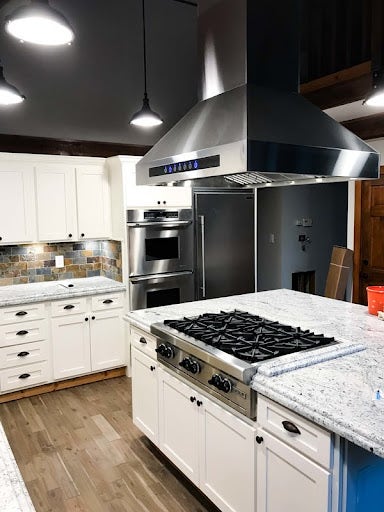
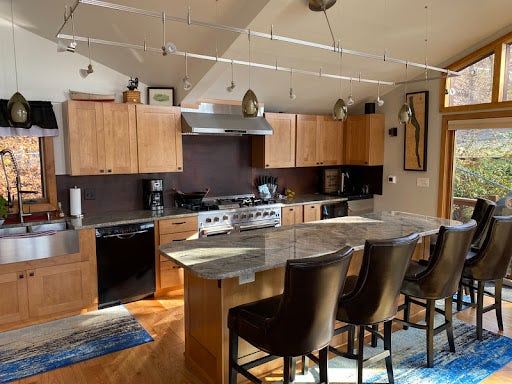
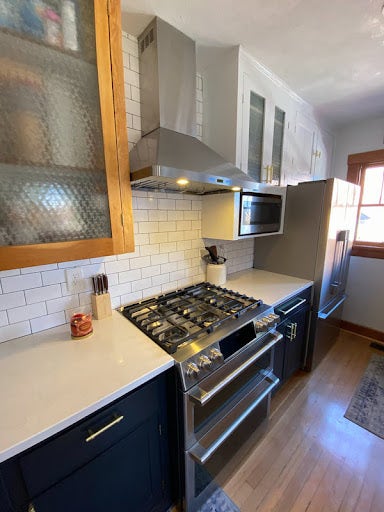

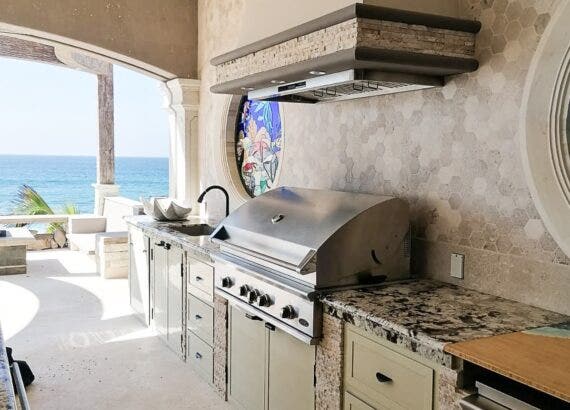
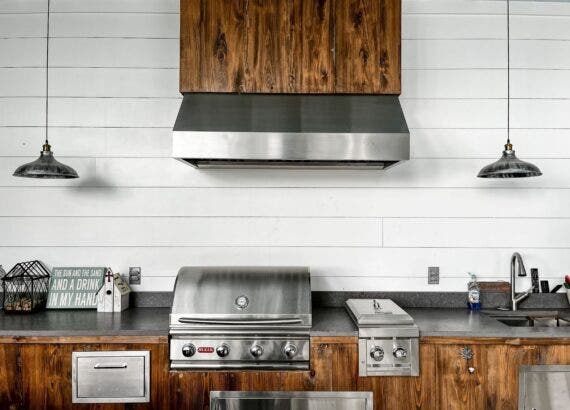
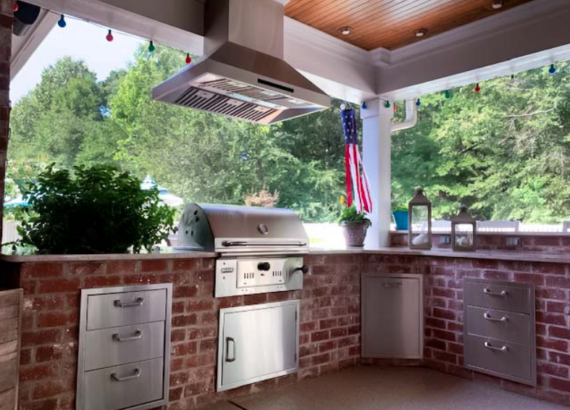
Comments are closed.